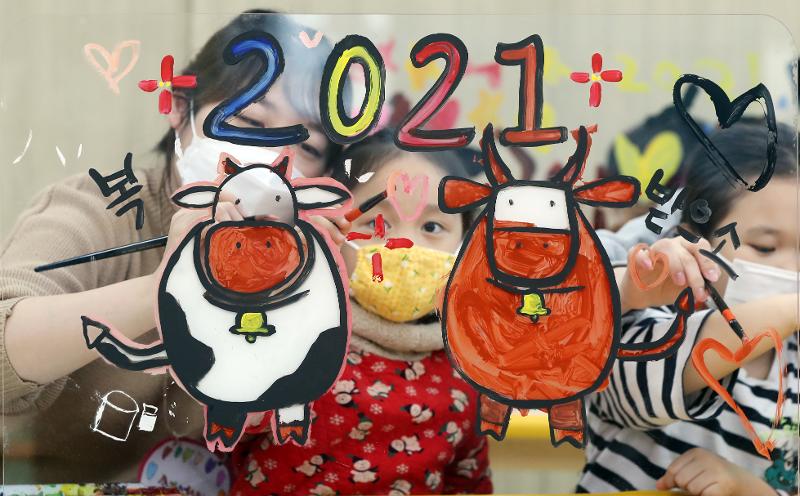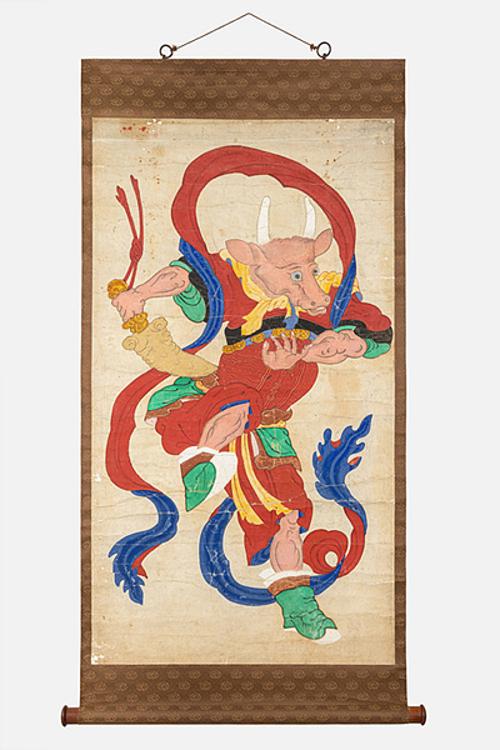
2021 is the Year of the White Ox. The photo shows children and their teachers on Jan. 6 at a daycare center in Gwangju's Buk-gu District Office drawing oxen on a transparent acrylic panel. (Yonhap News)
By Xu Aiying and Lee Jihae
2021 is the Year of the White Ox under the Asian zodiac. Koreans call this year a shinchuk year, with shin meaning "white" and chuk meaning "ox."
The ox is closely related to agricultural life, thus Koreans have considered it more than just livestock and similar to family. Oxen not only performed indispensable work like plowing fields, but also provided transportation. They were also called "an emergency safe" as they could easily be sold if a family urgently needed money.
The 2008 Korean documentary hit "Old Partner (Wonang Sori)" is about the ox of an old man who has been his lifelong friend, agricultural equipment and only means of transportation for 30 years. This film effectively depicts what the ox means to Koreans.
The ox is sincere, persevering and strong but not fierce, quietly doing hard work and symbolizing self-sacrifice. These traits have much in common with Korean sentiment, as an old saying goes "An ox may be speechless but has 12 virtues."
In modern Korea, the ox's role is not confined to agriculture; it is used in food, medicine, fashion and handicraft materials. When moving into a new home, a custom is to hang ox bones or a bridle at the front gate to ward off evil spirits. Thus an old saying goes "An ox has nothing to discard except its yawn."
Do people born in the Year of the Ox share the animal's traits? In Korea, such folk are said to display the ox's diligence and sincerity, and stubborn people who never change their opinions are called hwangso-gojib (bullheaded).

This painting shows an ox deity that wards off evil spirits. (National Folk Museum of Korea)
The National Folk Museum of Korea in Seoul through March 1 is hosting the exhibition "Oxen in Our Daily Lives."
The event shows the ox's place in the Korean psyche and how the animal is used in daily life through about 80 documents and videos on the meaning, significance and the changes oxen have undergone.
The exhibition can also be viewed online at the museum's website:
https://my.matterport.com/show/?m=QkJcmx9YVkd
xuaiy@korea.kr